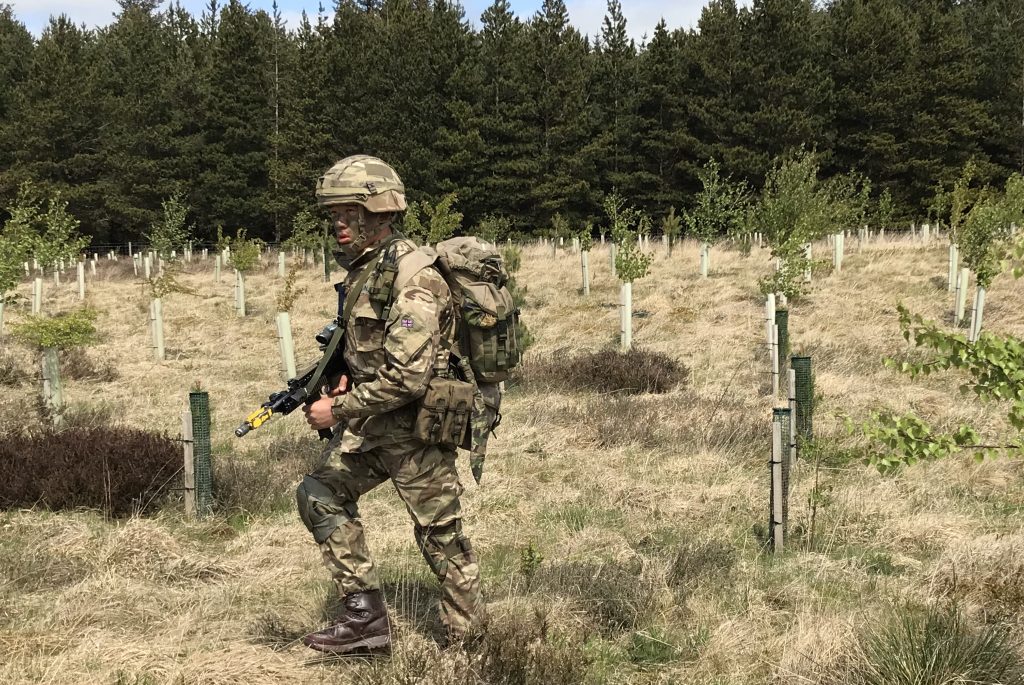
As forestry is such a long-term commitment, we’re putting a great deal of thought and effort into how we manage our woodlands. The decisions we make now, will affect the future management of the Defence estate for hundreds of years to come. The MOD rural estate is used for training our Armed Forces and the nature of this training means some large areas of open land are required to allow significant numbers of troops and vehicles to manoeuvre freely.
Although our aim has always been to provide and manage woodlands for the benefit of military training, we now need to consider a rapidly changing climate.

What we’re doing to reduce climate change
The UK MOD estate has approximately 19,500 hectares of woodland, which is around 12% of the rural estate. The Army Training Estate has around 17,000 hectares of woodland which is approximately 88% of the UK’s MOD woodland cover. Although impossible to accurately count, we have at least 60 million trees across our estate. This will increase as we’re currently carrying out a study to identify how many more trees we can plant on the Defence estate to help reduce climate change. We’re working closely with the Department for Environment, Food and Rural Affairs (Defra), the Forestry Commission, Dartmoor and the Northumberland National Park and the Northumberland Tree Partnership to help take this forward. This is a huge task which we hope will be completed from 2021 to 2022.
![A woodland at Catterick Training Area. [Crown Copyright / MOD 2018]](https://insideDIO.blog.gov.uk/wp-content/uploads/sites/29/2018/09/IMG_6618-e1544028720104-1024x683.jpg)
This resulted in significant new native woodlands across the country with the largest being 170 new native woodlands at the Warcop Training Area in Cumbria and around 100 hectares on the Catterick Training Area in North Yorkshire.
We’ve learnt a great deal over the years on woodland creation, and how to deal with the unique issues we face on our estate. I don't think many forestry departments have become so familiar with unexploded ordnance!
The future of MOD woodlands
Our aim is to have all our woodlands managed through long-term woodland management plans. These ensure that all our sustainable woodland management requirements meet military and environmental needs. Plans are being produced by our industry partners and should be completed by 2021.
We’ve already identified potential tree planting opportunities across 25 UK sites, covering around 750 hectares of land with the potential of planting 2 million trees, and planning work is already underway as part of this plan at Otterburn, Okehampton and Driffield Training Areas.
It’s important to say that tree planting is not the only way to help mitigate climate change and reduce our carbon footprint. The MOD estate is massive and has some of the most important natural habitats in Europe. The rolling grasslands of Salisbury Plain, the vast tracks of moorland across our northern training areas, the heathlands of the Home Counties and the valleys of Wales all reduce our carbon footprint. If managed sensitively, all these areas can support more woodland, which will provide benefits for years to come.